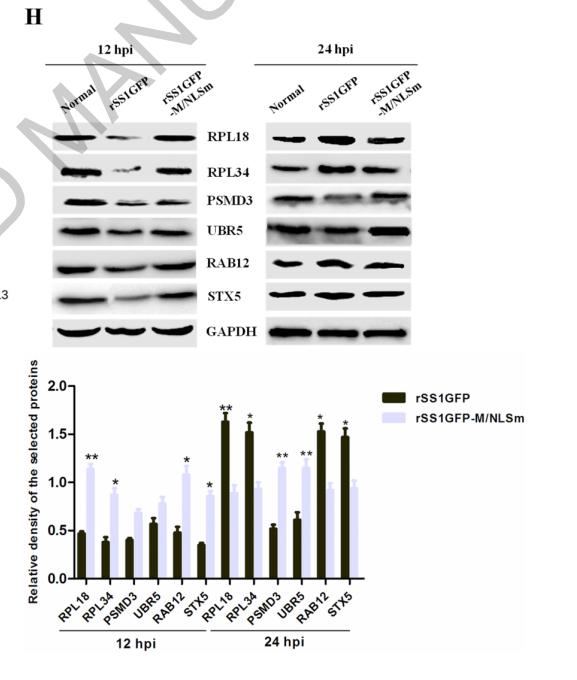RAB12 Antibody - #DF12459
| Product: | RAB12 Antibody |
| Catalog: | DF12459 |
| Description: | Rabbit polyclonal antibody to RAB12 |
| Application: | WB IHC |
| Cited expt.: | WB |
| Reactivity: | Human, Mouse |
| Prediction: | Pig, Bovine, Horse, Sheep, Rabbit, Dog, Chicken |
| Mol.Wt.: | 28 kDa; 27kD(Calculated). |
| Uniprot: | Q6IQ22 |
| RRID: | AB_2845264 |
Related Downloads
Protocols
Product Info
*The optimal dilutions should be determined by the end user. For optimal experimental results, antibody reuse is not recommended.
*Tips:
WB: For western blot detection of denatured protein samples. IHC: For immunohistochemical detection of paraffin sections (IHC-p) or frozen sections (IHC-f) of tissue samples. IF/ICC: For immunofluorescence detection of cell samples. ELISA(peptide): For ELISA detection of antigenic peptide.
Cite Format: Affinity Biosciences Cat# DF12459, RRID:AB_2845264.
Fold/Unfold
Putative Ras related protein Rab 12; RAB12; RAB12, member RAS oncogene family; RAB12_HUMAN; Ras-related protein Rab-12;
Immunogens
A synthesized peptide derived from human RAB12, corresponding to a region within C-terminal amino acids.
- Q6IQ22 RAB12_HUMAN:
- Protein BLAST With
- NCBI/
- ExPASy/
- Uniprot
MDPGAALQRRAGGGGGLGAGSPALSGGQGRRRKQPPRPADFKLQVIIIGSRGVGKTSLMERFTDDTFCEACKSTVGVDFKIKTVELRGKKIRLQIWDTAGQERFNSITSAYYRSAKGIILVYDITKKETFDDLPKWMKMIDKYASEDAELLLVGNKLDCETDREITRQQGEKFAQQITGMRFCEASAKDNFNVDEIFLKLVDDILKKMPLDILRNELSNSILSLQPEPEIPPELPPPRPHVRCC
Predictions
Score>80(red) has high confidence and is suggested to be used for WB detection. *The prediction model is mainly based on the alignment of immunogen sequences, the results are for reference only, not as the basis of quality assurance.
High(score>80) Medium(80>score>50) Low(score<50) No confidence
Research Backgrounds
The small GTPases Rab are key regulators of intracellular membrane trafficking, from the formation of transport vesicles to their fusion with membranes. Rabs cycle between an inactive GDP-bound form and an active GTP-bound form that is able to recruit to membranes different set of downstream effectors directly responsible for vesicle formation, movement, tethering and fusion. That Rab may play a role in protein transport from recycling endosomes to lysosomes regulating, for instance, the degradation of the transferrin receptor. Involved in autophagy (By similarity).
Phosphorylation of Ser-106 in the switch II region by LRRK2 prevents the association of RAB regulatory proteins, including CHM, CHML and RAB GDP dissociation inhibitors GDI1 and GDI2.
Recycling endosome membrane>Lipid-anchor>Cytoplasmic side. Lysosome membrane>Lipid-anchor>Cytoplasmic side. Golgi apparatus membrane. Cytoplasmic vesicle>Autophagosome.
Belongs to the small GTPase superfamily. Rab family.
References
Application: WB Species: Mouse Sample: BSR-T7/5 cells
Restrictive clause
Affinity Biosciences tests all products strictly. Citations are provided as a resource for additional applications that have not been validated by Affinity Biosciences. Please choose the appropriate format for each application and consult Materials and Methods sections for additional details about the use of any product in these publications.
For Research Use Only.
Not for use in diagnostic or therapeutic procedures. Not for resale. Not for distribution without written consent. Affinity Biosciences will not be held responsible for patent infringement or other violations that may occur with the use of our products. Affinity Biosciences, Affinity Biosciences Logo and all other trademarks are the property of Affinity Biosciences LTD.

